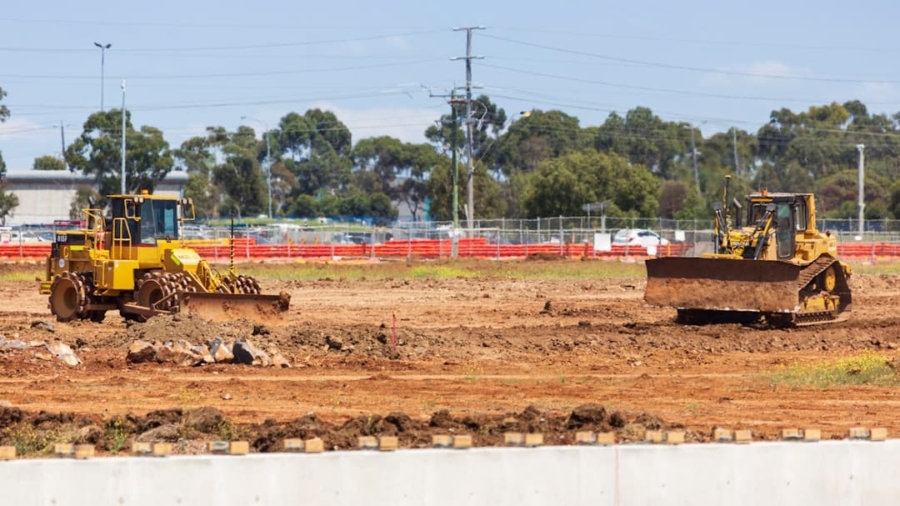The advent of 5G technology marks a significant milestone in the evolution of telecommunications, promising to transform various sectors, including agriculture. As the global population continues to rise, the demand for food production intensifies, necessitating innovative solutions to enhance agricultural efficiency and sustainability. Smart agriculture, which leverages advanced technologies to optimize farming practices, stands to benefit immensely from the high-speed, low-latency capabilities of 5G networks.
This next-generation wireless technology enables real-time data transmission and connectivity among devices, paving the way for a more interconnected and intelligent agricultural ecosystem. In the context of smart farming, 5G facilitates the deployment of Internet of Things (IoT) devices, drones, and autonomous machinery that can communicate seamlessly with one another. This interconnectedness allows farmers to monitor crop health, soil conditions, and weather patterns with unprecedented precision.
By harnessing the power of 5G, agricultural stakeholders can make informed decisions that enhance productivity while minimizing resource waste.
Key Takeaways
- 5G technology has the potential to revolutionize agriculture by enabling faster and more reliable connectivity for smart farming applications.
- Advantages of 5G in agriculture include improved data transfer speeds, lower latency, and increased capacity for connecting a large number of devices and sensors.
- Applications of 5G in smart farming range from precision agriculture and autonomous farming equipment to real-time monitoring of crops and livestock.
- Challenges and limitations of 5G in agriculture include the need for extensive infrastructure development, high initial costs, and potential security and privacy concerns.
- Future developments and innovations in 5G for agriculture may include the integration of 5G with IoT and AI technologies to further enhance efficiency and productivity in farming practices.
Advantages of 5G Technology in Agriculture
One of the most significant advantages of 5G technology in agriculture is its ability to provide ultra-reliable low-latency communication (URLLC). This feature is crucial for applications that require immediate feedback, such as autonomous vehicles and drones used for precision farming. For instance, a farmer utilizing a drone equipped with 5G connectivity can receive real-time data on crop health and soil moisture levels.
This instantaneous feedback allows for timely interventions, such as targeted irrigation or pest control measures, ultimately leading to improved crop yields and reduced resource consumption. Moreover, 5G networks offer enhanced bandwidth capabilities, enabling the simultaneous connection of numerous devices without compromising performance. In a typical agricultural setting, a multitude of sensors and devices may be deployed across vast fields to monitor various parameters.
With 5G, farmers can connect thousands of IoT devices that collect data on everything from temperature and humidity to nutrient levels in the soil. This wealth of information can be analyzed to optimize farming practices, leading to more efficient use of fertilizers and water resources. The ability to gather and process large volumes of data in real-time empowers farmers to make data-driven decisions that enhance productivity and sustainability.
Applications of 5G in Smart Farming
The applications of 5G technology in smart farming are diverse and transformative. One prominent application is the use of autonomous vehicles for planting, harvesting, and transporting crops. These vehicles rely on real-time data from various sensors to navigate fields safely and efficiently.
With 5G connectivity, these machines can communicate with each other and with central control systems, allowing for coordinated operations that minimize downtime and maximize efficiency. For example, a fleet of autonomous tractors can work together to optimize planting schedules based on soil conditions and weather forecasts. Another significant application is precision agriculture, where farmers utilize data analytics to make informed decisions about crop management.
With 5G-enabled sensors placed throughout fields, farmers can monitor crop health continuously. These sensors can detect early signs of disease or nutrient deficiencies, allowing for timely interventions that can save entire harvests. Additionally, drones equipped with 5G technology can conduct aerial surveys to assess crop health from above, providing farmers with a comprehensive view of their fields.
This combination of ground-based sensors and aerial imagery creates a holistic approach to crop management that enhances productivity while reducing environmental impact.
Challenges and Limitations of 5G in Agriculture
Despite its numerous advantages, the implementation of 5G technology in agriculture is not without challenges. One significant hurdle is the infrastructure required to support 5G networks in rural areas where many farms are located. The deployment of 5G towers and base stations can be costly and logistically complex, particularly in remote regions where population density is low.
This lack of infrastructure may result in uneven access to 5G services, creating disparities between urban and rural agricultural operations. Additionally, there are concerns regarding cybersecurity and data privacy associated with the increased connectivity that 5G brings. As more devices become interconnected, the potential for cyberattacks increases.
Farmers must ensure that their data is secure from unauthorized access or manipulation, which could have devastating consequences for their operations. Furthermore, the reliance on technology raises questions about data ownership and privacy rights. Farmers need clear guidelines on how their data will be used and who has access to it to foster trust in these new systems.
Future Developments and Innovations in 5G for Agriculture
Looking ahead, the future developments in 5G technology for agriculture are poised to be groundbreaking. As research continues into enhancing network capabilities, we can expect improvements in coverage and reliability that will make 5G more accessible to farmers worldwide. Innovations such as network slicing could allow for customized network experiences tailored specifically for agricultural applications, ensuring that critical operations receive priority bandwidth during peak usage times.
Moreover, advancements in edge computing will complement 5G technology by enabling data processing closer to where it is generated. This reduces latency further and allows for real-time decision-making at the field level. For instance, edge computing could facilitate immediate responses from autonomous machinery based on sensor data without needing to send information back to a central server first.
Such developments will enhance the efficiency of smart farming practices and enable farmers to respond swiftly to changing conditions.
Integration of 5G with IoT and AI in Farming
The integration of 5G technology with IoT devices and artificial intelligence (AI) represents a significant leap forward in smart agriculture. IoT devices equipped with sensors can collect vast amounts of data related to soil health, weather conditions, and crop performance. When combined with AI algorithms capable of analyzing this data, farmers can gain insights that were previously unattainable.
For example, AI can predict crop yields based on historical data and current conditions, allowing farmers to plan their resources more effectively. Furthermore, AI-driven predictive analytics can help farmers optimize their operations by identifying patterns and trends within their data. For instance, machine learning models can analyze weather patterns alongside soil moisture levels to recommend optimal irrigation schedules tailored to specific crops.
This level of precision not only enhances productivity but also contributes to sustainable practices by minimizing water usage and reducing chemical inputs.
Impact of 5G on Sustainable Agriculture Practices
The impact of 5G technology on sustainable agriculture practices cannot be overstated. By enabling precision farming techniques, 5G facilitates more efficient use of resources such as water, fertilizers, and pesticides. For instance, smart irrigation systems powered by 5G can deliver water precisely when and where it is needed based on real-time soil moisture data.
This targeted approach reduces water waste and helps conserve this vital resource in regions facing water scarcity. Additionally, the ability to monitor crop health continuously allows farmers to adopt integrated pest management strategies that minimize chemical usage. By detecting pest infestations early through sensor data or drone imagery, farmers can apply targeted treatments rather than blanket applications across entire fields.
This not only reduces chemical runoff into surrounding ecosystems but also promotes biodiversity by preserving beneficial insect populations.
The Potential of 5G in Revolutionizing Agriculture
The potential of 5G technology in revolutionizing agriculture is immense, offering solutions that address some of the most pressing challenges faced by the industry today. From enhancing productivity through real-time data analysis to promoting sustainable practices that conserve resources, 5G stands at the forefront of agricultural innovation. As farmers increasingly adopt smart farming techniques powered by this advanced connectivity, we can expect a transformation in how food is produced and managed globally.
While challenges remain regarding infrastructure development and cybersecurity concerns, ongoing advancements in technology promise to overcome these obstacles. The integration of 5G with IoT devices and AI will further enhance the capabilities available to farmers, enabling them to make informed decisions that benefit both their operations and the environment. As we move forward into an era defined by connectivity and intelligence in agriculture, the role of 5G will undoubtedly be pivotal in shaping a more sustainable future for food production worldwide.
For more information on cutting-edge technology, check out this article on the features of the Samsung Galaxy Book Odyssey. This piece delves into the innovative capabilities of this device and how it can revolutionize the way we work and communicate. Just like the advancements in 5G technology are transforming smart agriculture and farming, the Samsung Galaxy Book Odyssey is pushing the boundaries of what is possible in the digital world.
FAQs
What is 5G technology?
5G technology is the fifth generation of mobile network technology, offering faster speeds, lower latency, and the ability to connect a massive number of devices simultaneously.
How is 5G technology relevant to smart agriculture and farming?
5G technology can enable smart agriculture and farming by providing high-speed, reliable connectivity for a wide range of applications such as precision farming, livestock monitoring, and autonomous machinery.
What are the benefits of 5G in smart agriculture and farming?
The benefits of 5G in smart agriculture and farming include improved efficiency, increased productivity, better resource management, and the ability to deploy advanced technologies such as drones and autonomous vehicles.
What are some potential applications of 5G in smart agriculture and farming?
Potential applications of 5G in smart agriculture and farming include real-time monitoring of crops and livestock, remote operation of machinery, precision irrigation, and the use of drones for crop surveillance.
What are the challenges of implementing 5G in smart agriculture and farming?
Challenges of implementing 5G in smart agriculture and farming include the need for widespread network coverage in rural areas, the cost of deploying 5G infrastructure, and ensuring the security and privacy of data transmitted over 5G networks.



